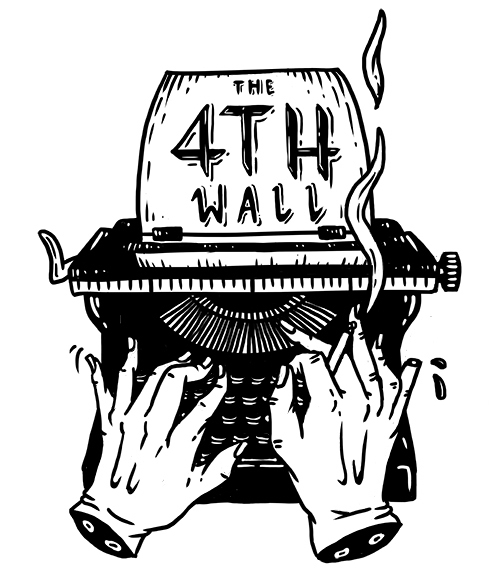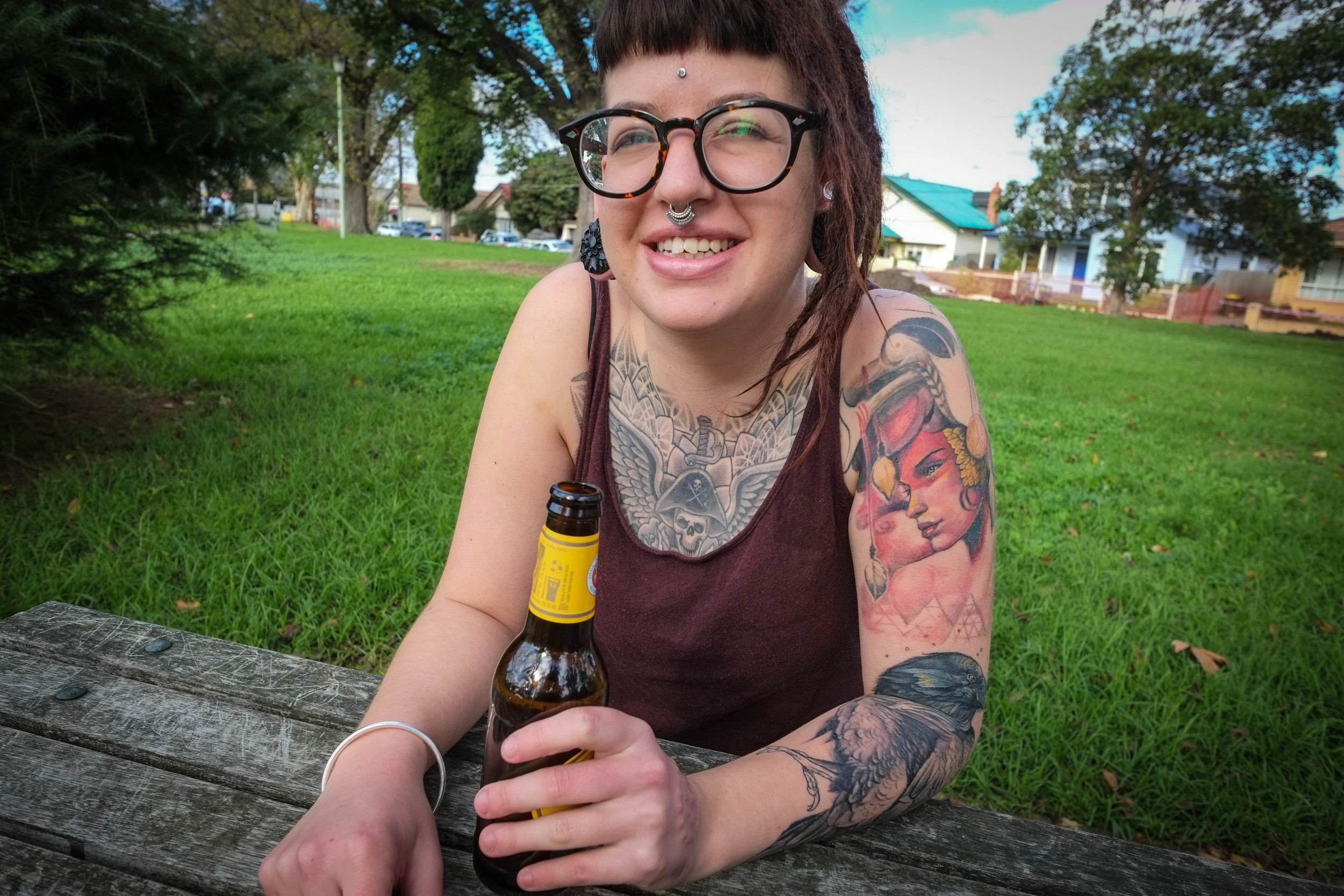Flesh Eating Body Modifiers
In September 1999, The American Journal of Forensic Medicine and Pathology published a study by Mark Benecke, M.D., entitled First Report of Nonpsychotic Self-Cannibalism (Autophagy), Tongue Splitting, and Scar Patterns (Scarification) as an Extreme Form of Cultural Body Modification in a Western Civilization. In it, Benecke focuses on the sociocultural behaviour of a 28-year-old Caucasian woman who ‘routinely injures and allows subsequent healing of her skin and other tissues’. Known only as S.E., the woman displayed ‘lifestyle related behavioural patterns’ that, according to Benecke, ‘may puzzle even experienced forensic pathologists, criminalists, and law enforcement officials.’ He was referring to the branding, cutting, tongue splitting, needle play, and eating of parts of her skin that were previously cut off of her body. At the time, Benecke claimed that S.E.’s case is the only example of severe, nonpsychotic, autodestructive behaviour in Western culture to have been documented in psychological or medical literature. He forewarned that this might not be the case in the future, ‘as an increasing number of young individuals have become interested in body modifications’. Surprisingly, however, even after fifteen years of an expanding body modification scene, nonpsychotic self-cannibalism remains absent from academic literature.
Anthropologically speaking, cannibalism is usually explained in one of two ways: Occurring within a peaceful funerary context, endocannibalism retains the memory of the deceased through the consumption of part or all of their body; Exocannibalism, taking place in the context of warfare, is executed to acquire the strength of one’s foe. The word ‘cannibal’ derives from the Carib people in the Antilles, who Columbus identified on his second voyage to the Caribbean in 1493 as eaters of human flesh. Yet the first documented mention of cannibalism was in the fifth century B.C., where Herodotus maligned the unlawful and ‘savage’ anthropophagi, a tribe of human-flesh eaters he denounced as living beyond Greek civilization, morally as well as geographically. Since then, stories of cannibalism have been guilty of escalating to sensationalism, usually interlaced with elements of the psychopathic and absurd. Take the following, for instance. Supposedly taking place during the aftermath of a battle in Papua New Guinea, the anthropologist Ronald Berndt included this account given to him by an informant, in his 1962 book Excess and Restraint Social Control Among a New Guinea Mountain People.
Jess Saunders with a piece of her forehead flesh.
Here Unapi’na of Kogu selected the corpse of a young woman name Pazu’na: finding her attractive, he knelt between her legs and pulling them to his thighs began to copulate, cutting the body as he did so. A Kogu woman, Aria, came up, and said to him, ‘You are taking a long time. You are only pretending to cut. All the time you copulate.’ But having ejaculated he began again, at the same time slowly cutting off the woman’s breasts. By this time Aria, a nenafu of his, became impatient and set to work on the corpse herself with her bamboo knife. She began to cut across the corpse’s belly, but Unapi’na was so intent on copulating that he did not notice how near her knife was. Aria, for her part, was careless. She cut further in and across, hacking away at the flesh; and since Unapi’na’s penis was in the woman’s vagina, she cut most of it off. Unapi’na fell back crying, blood flowing from the stump of his penis. Aria blamed him for what had happened. ‘You sit there copulating, not bothering to cut her up properly. This woman is dead, ready to be cut up for eating. I told you about it, but you continued copulating. Thus, I cut off your penis!’ Unapi’na replied, ‘I looked at this Kamano woman; she was a good woman. I looked at her vulva, and I liked it; that is why I copulated. But now you have cut off my penis! What shall I do?’ Aria removed the end of the penis she had cut off, popped it into her mouth, and ate it, and then continued with the cutting. Unapi’na was helped back to his house, where he rested. Ovens were made and the meat cooked, amid dancing and singing. Unapi’na was given the woman’s vulva and surrounding flesh to eat.
In The Man-Eating Myth, the American anthropologist W. Arens postulates that academics and plebs alike embrace the ‘exotic image’ of cannibalism because it contributes to the ‘never-ending search for the primitive,’ which gives meaning to ‘the concept of civilization’. This dichotomy, which rests on the figures of the ‘noble civilian’ and the ‘ignoble savage’, sometimes known as the ‘West’ and the ‘Rest’, is academic residue from enlightenment discourse about social progress. For at least the past four hundred years, cannibalism has been a salient feature of ‘barbarism’. And as anthropologists have been guilty of exoticising foreign cannibalism, they and other academics are similarly culpable of pathologising cannibalism at home. So when acts of autophagy do occur in a western context outside of survivalist or psychopathic scenarios, we do find it counterintuitive to comprehend it as anything but primitive, transgressive behaviour. The last sentence of Benecke’s definitive report confirms this point: ‘In reality, it may be difficult to decide whether body modification can be understood as self-therapy or as “unwanted behaviour”.’
‘During one of the cutting sessions, which are always performed without anaesthetic (including alcohol), S.E. consumed some of the tissue, with the largest piece measuring ~ 10 cm x 7 mm. After chewing on the skin, which she could not bite through, she swallowed the piece of tissue.’
Benecke, a forensic biologist, determines for himself that S.E. is psychologically balanced, but then he concludes that her actions might be classified as attention-seeking and/or self-caring behaviour. Her act of self-cannibalism, or autophagy (from the Greek “auto”, meaning ‘self’, and “phagein”, ‘to eat’), described above in the same affectless prose as the rest of Benecke’s study, took place at the end of the last century, when social media was practically nonexistent. As Benecke remarks, ‘I have learned from direct observation that most members of the ‘mutilation scene’ are not willing to discuss their own desires to perform body modifications with those individuals outside of the scene.’ Today, however, the webby tool of the Internet allows the borders of iconoclastic cliques and coteries to be traversed and their cultural cores exposed to the appraisal of clinical scholars and colourful laymen like myself…
‘It was really chewy, and kind of gross, like uncooked bacon rind.’
Jess Saunders.
This mouthful report comes to us from Jess Saunders, a 25-year-old tattooist living in Melbourne, Australia. After some inkblot tests and word-association games—‘What’s the first thing that comes to your mind when I say “food”?’ ‘Energy.’—her completion of several exercises from my previous-century’s high-school psychology coursebook convinced me that she was completely compos mentis. Several weeks prior to our meeting, I was scrolling through my Instagram feed sighing at the usual litter of insufferable selfies, droll pet poses, and images of greener grass over yonder with child and spouse, when I was confronted with an open mouth and protruding tongue, upon which sat, bloodied and mangled, a piece of flesh that I later discovered was cut from Jess’s forehead. Needless to say, I had to find out, ‘What is that grotesque little abortion?’
‘Since putting the photo on Instagram, I was like, “Wow; I didn’t realise it would become such a thing”. Someone put it on Facebook, and it turned into this big thing with over 200 comments, and everyone was thinking I was a total freak. I guess I took it a bit lightly and didn’t explain myself, it was just like “RAAAAAHHH; I’m eating my own head!”’
Jess' silicone implants.
Magnetic implant.
Besides being covered in tattoos, Jess has both ears sculptured and conchs removed, silicone implants in her left hand, a subcutaneous magnet in her index finger, and scarification on her forehead. After the procedures, she’s always presented with the choice to keep, throw away, or eat the leftover flesh: the offal of her mods, if you will.
‘I just felt like I had to do it eventually, so when I got the scarification done on my head, I thought it was time to try it. I like the ritual. You’re getting something done, you’re going through all the pain, and it is like a rite of passage. I’ve heard a lot of people take it home and cook it. Maybe [I’ll do that] one day; depends how much more I have cut off. We kind of brush over it a lot, especially how tattoos are so normal now. Like, every time you get something done, it is a little rite of passage, however much you’d want to acknowledge it or not.’
Jess' scarification from where she acquired her flesh!
Unlike the specifications of endo and exo cannibalism, Jess is neither mourning nor warring, nor is she eating the flesh of others.
‘I don’t think cannibalism is the right word, because I think that has more violent connotations. It’s not. It’s the end of the ritual, taking it back into you. Why not treat it like an actual ritual. We should see more in the actual experience, rather than just having the end product.’
She is eating parts of herself, a practice that was usually understood as the pathological destruction of the self through cannibalism, until Benecke’s report introduced the medical community to the concept of autophagy as innocuous cosmetic ritual. Just as the spread of the home-birth movement in the 1970s revitalized placentophagy (where the mother eats her newborn’s placenta), the popularity of body modifications and an accompanying desire for ritual has coalesced into a practice of autophagy that occurs beyond the perimeters of the primitive/civilized dichotomy and is independent of the insane/competent binaries. Cannibalising the remnants of one’s own body modifications is a uniquely modern phenomenon, and begs for an equally unique designation—perhaps ‘automodiphagy’ would do the trick.
Photos taken by Fareed Kaviani.













